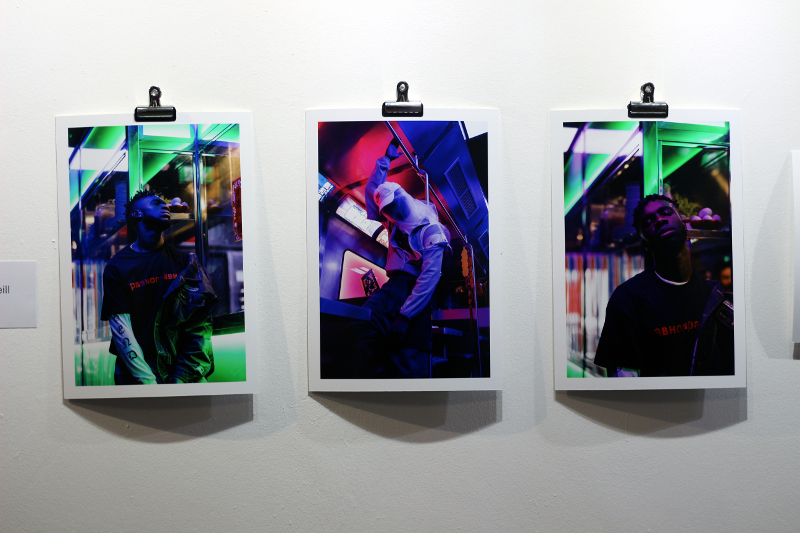This year’s Dublin University Photography Association (DUPA) Showcase took place in the newly renovated Tara Building, a formerly disused space that has recently received a makeover from Irish artist Maser. The building provided space for a wide variety of images by Trinity students to be displayed.
The society’s committee used the large area available to them to its full potential, with larger photographs attached to the walls using industrial clips, matching the decor of the room, and a number of small black and white images displayed on the columns. This ensured that as many images were shown as possible, while still giving each the space required to be appreciated fully. The atmosphere of the event was relaxed, with the large crowd that gathered early on engaging with the photographs and in lively discussion, assisted by the wine and sushi provided by the committee at the bar near the entrance.
But of course the highlight of the evening was the phenomenal work on display, showing the ability of students from all around the college. Almost all of the images were in colour, with wildlife and landscape photography dominating the larger format work throughout the room. Darragh Stewart’s photos highlighted the natural beauty of the animals in his work using less dramatic editing and more simple composition, two things that were noticeable in almost all of the work in the gallery. By contrast, Lisa Fitzgerald’s icy landscapes came alive with her use of strong blacks and saturated colours.
Travel photography was prominent in the photos, with Lucie Munier’s wide cinematic shots of South East Asia and Jessica Boyne’s lively and colourful images of Cuba being particular highlights in this style. Both of these photo series captured the essence of their respective locations by varying the types of images used, from landscapes to close portraits of the locals, all with effective editing and bold colours that highlighted the natural beauty of these amazing areas.

The smaller format photography being shown was also of a very high quality, with most photographers choosing to focus on more intimate and personal scenes. Alana Storm O’Sullivan and Jason Botha captured beauty in everyday scenes, using unusual lighting and composition that stood out on the black and white film used. Work from the workshops run by the society throughout the year was also on show, with Lara Theobalt’s quiet urban snapshots highlighting the quality of the society’s classes.
Photos related to causes important to the students were also present at the showcase, from climate change to the repeal the eighth movement. Grace O’Boyle’s images of the March for Repeal captured the hopeful atmosphere at the event, with striking composition and black and white processing contrasting with this to give balance to the images. James Orr’s sparse and desolate photos of the Great African Rift Valley were wonderfully composed and edited, acting as powerful reminders of the dangers of climate change. Showing just the tops of trees over the rising water level in the misty valley was a very effective method of highlighting the immediacy of the situation and the lack of progress in combatting it.
There were also a number of more experimental photo series at the event, such as the images by John Harding and Katie O’Neill. Harding’s photos of the sky used silhouettes of buildings and telephone wires to create geometric patterns over the faded patches of colour formed by clouds, taking a new look at landscape photography and showing the interactions between the natural world and the city. Katie O’Neill’s images were perhaps the most striking of the showcase, using vibrant neon colours and strong blacks to create a “neo-noir” style in her portraits. With strong geometric backgrounds and reflections that lit the shot expertly, a sense of depth was added to the images that made for fascinating compositions without distracting from the subject.
The crowd continued to grow throughout the night, and though the space felt full, it was never cramped, with more than enough room to talk and view the work on display at all times. The large speakers in the room began to play more lively R&B as the night progressed, and the fast-paced music, combined with the photos being taken of attendees, made the event truly feel like a celebration of the talent and versatility of photographers in Trinity and a fitting way to close out the year for the society.






